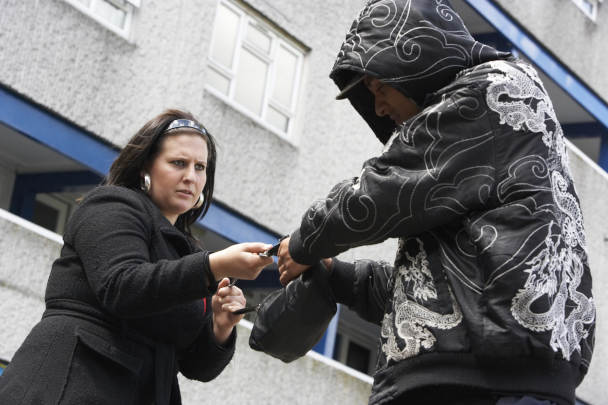Understanding Mugging & Why Awareness Matters

Muggings happen when an individual is attacked and robbed in a public place, often using force or intimidation. While violent crime rates fluctuate, muggings remain a serious threat, particularly in urban areas. Understanding when and where these crimes occur can help you take precautions and stay safe.
When Do Most Muggings Happen?
High-Risk Times for Muggings
-
Friday Evenings & Weekends – Criminals often assume people have just been paid and may be carrying cash.
-
Late Nights & Early Mornings – Crimes involving weapons are more likely to happen under the cover of darkness.
-
Commuting Hours (3 PM - 6 PM for Teens, 8 PM - 12 AM for Adults) – Students are often targeted after school, while adults face risks leaving work or social events.
Where Do Most Muggings Happen?
-
Poorly Lit Streets & Alleys – Criminals take advantage of low visibility to avoid detection.
-
Public Transportation Stops – Bus and train stations attract large crowds, making it easier for criminals to find distracted targets.
-
ATMs & Parking Lots – Thieves know that people withdrawing money or returning to their vehicles are often distracted.
-
Tourist Areas – Pickpockets and muggers prey on unsuspecting travelers who may not be familiar with their surroundings.
How to Avoid Getting Mugged: Prevention Tips
Stay Aware of Your Surroundings
-
Avoid looking at your phone while walking in unfamiliar or high-crime areas.
-
Be mindful of people loitering or acting suspiciously.
-
Trust your instincts—if something feels off, leave the area.
Use the Buddy System
-
Walk with a friend or in a group, especially at night.
-
If alone, stay on well-lit paths and high-traffic areas.
Secure Your Valuables
-
Keep your phone, wallet, and keys secured and out of sight.
-
Carry cross-body bags or money belts that are harder to snatch.
-
Avoid displaying expensive jewelry, electronics, or large amounts of cash.
Take Self-Defense Precautions
-
Learn basic self-defense moves to escape an attacker.
-
Carry self-defense tools that can deter criminals.
-
Stay confident and walk with purpose—muggers often target those who seem unaware or vulnerable.
5 Essential Self-Defense Tools to Deter Muggers
Carrying the right tools can make all the difference if you ever find yourself in a dangerous situation. These self-defense weapons are legal in most areas and can provide peace of mind:
-
-
Easy to carry and highly effective in disabling an attacker.
-
Sprays up to 10-12 feet, allowing you to maintain distance.
-
Many models include UV dye to mark an attacker for identification.
-
-
-
Emits a loud, high-pitched sound to attract attention and deter attackers.
-
Small enough to attach to a keychain or purse.
-
Some models include LED lights for added visibility.
-
-
-
Delivers a high-voltage electric shock to incapacitate an attacker.
-
Compact, easy to carry, and effective at close range.
-
Some models double as flashlights for added functionality.
-
-
-
Functions as a regular pen but doubles as a striking weapon.
-
Durable and discreet, fitting easily into a pocket.
-
Some models include glass breakers for emergency situations.
-
-
-
Small but powerful, allowing you to strike pressure points.
-
Easy to carry as part of your everyday keychain.
-
Provides a discreet self-defense option.
-
What to Do If You’re Being Mugged
Even with all the right precautions, sometimes muggings are unavoidable. If you find yourself being targeted:
-
Stay Calm – Panicking can escalate the situation.
-
Comply If Necessary – If an attacker has a weapon, your life is more valuable than your possessions.
-
Use Your Self-Defense Tools Wisely – If you have a weapon, use it decisively and create an opportunity to escape.
-
Get to a Safe Place & Call for Help – Report the incident to authorities as soon as possible.
Final Thoughts: Take Control of Your Safety
Muggings can happen anywhere, but awareness and preparation can significantly reduce your risk. By staying alert, carrying the right self-defense tools, and knowing how to respond in an emergency, you can take control of your safety.
Explore our collection of personal safety devices at TBOTECH to find the best protection for you.
Add your comment now!
Post CommentRecent posts
-
06/27/2025Personal Safety Devices for Women
-
06/27/2025Can You Bring Pepper Spray on a Plane?
-
06/27/2025Are Butterfly Knives Illegal?
